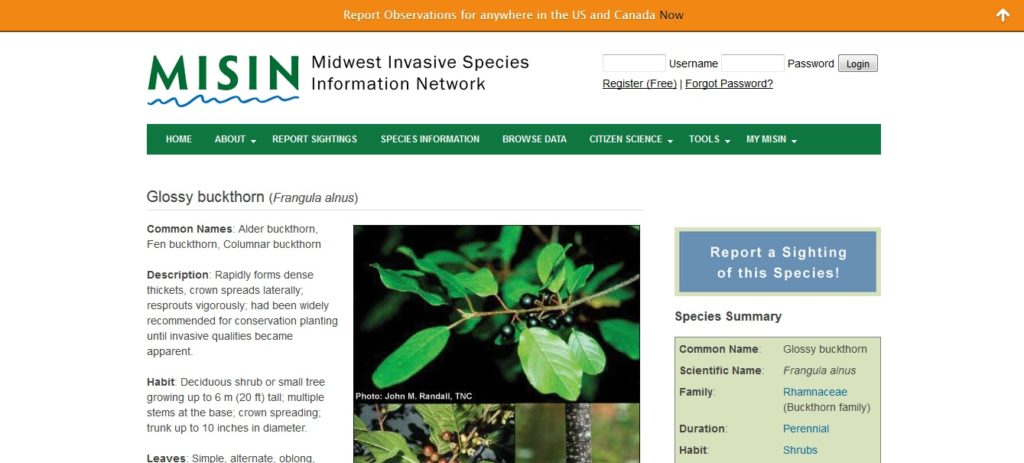
KEEPING UP TO DATE WITH INVASIVES: GLOSSY BUCKTHORN
Glossy buckthorn has been planted in the U.S. for nearly 200 years and was commonly used for hedgerows, forestry plantings, and wildlife habitat until its invasive tendencies became apparent. With Michigan being one of the best bird watching states, it’s common for our residents to want to supply the native birds with fruits and seeds, and since glossy buckthorn produces a high volume of fruit, it was commonly used to feed birds. However, with its invasive tendencies we learned too late that it was a mistake.
Like many other invasive shrubs, the glossy buckthorn leafs out early in the spring and retains its leaves late into the fall. Creating dense thickets and generally out-competing native vegetation, while small mammals and birds widely disperse its fruits. It is a particular pest on wet sites making roadsides a sweet spot for growth. However it still poses a threat to Michigan’s rich prairie fens, old fields, and open woods.
Being a plant that bears fruit makes it easier to identify but very difficult to control. Buckthorn has pea-sized fruits with 3-4 seeds that ripen from green to red to dark purple from July through September. Since native plant species tend to lose their leaves or at least go through color change, the later September days can be some of the best for identifying the buckthorn.
One of the most important steps in controlling this species is to prevent seed production and dispersal. A variety of techniques including both mechanical and chemical controls are generally the most effective and should be tailored to the infected site. In the earliest stages of invasion, when only scattered seedlings and young plants are present techniques such as pulling and digging may be adequate enough to control or eradicate the buckthorn. However if the invasion is large the combination of both chemical and mechanical will almost always be needed. It is critical to monitor the site to ensure that cut stumps and treated shrubs do not resprout and that the seedbank is exhausted.
If you’re worried about losing all the birds that flock your yard some great alternatives to buckthorn include: fruit-bearing native viburnums (V. acerifolium, V. dentatum, V. lentago, V. prunifolium and V. rafinisquianum are all native to Michigan), dogwoods (Cornus alternifolia, C. amomum, C. florida, C. foemina (racemosa), C. rugosaand C. sericea (stolonifera) are all native to Michigan or Serviceberry (Amelanchier arborea and A. laevis are both native to Michigan). These native replacements will still provide a food source for birds and will add natural beauty to your yard.
This article is part of the ongoing series on invasive species funded in part with funds from the Michigan Invasive Species Grant Program through the Departments of Natural Resources, Environmental Quality, and Agriculture and Rural Development

